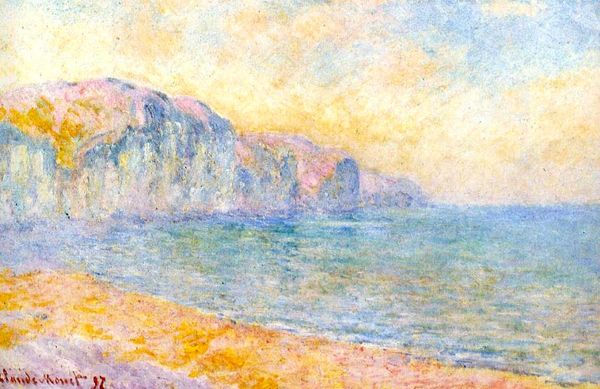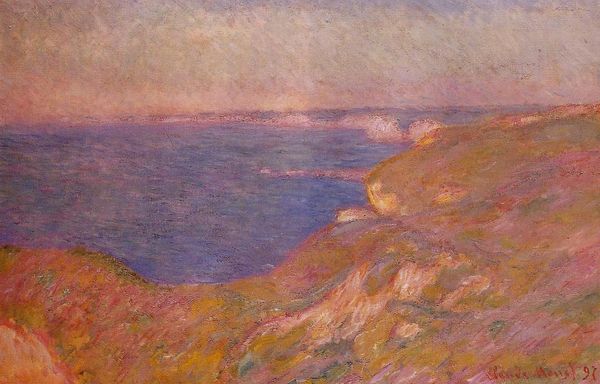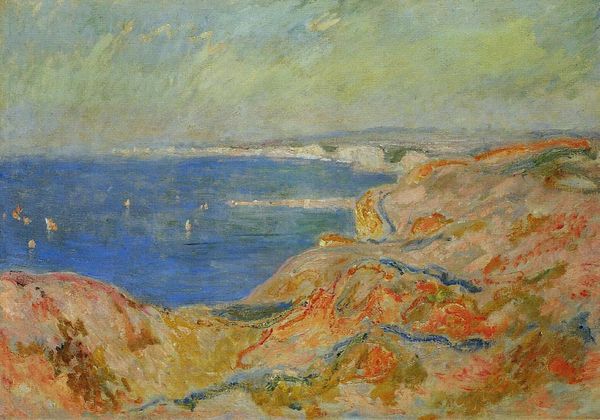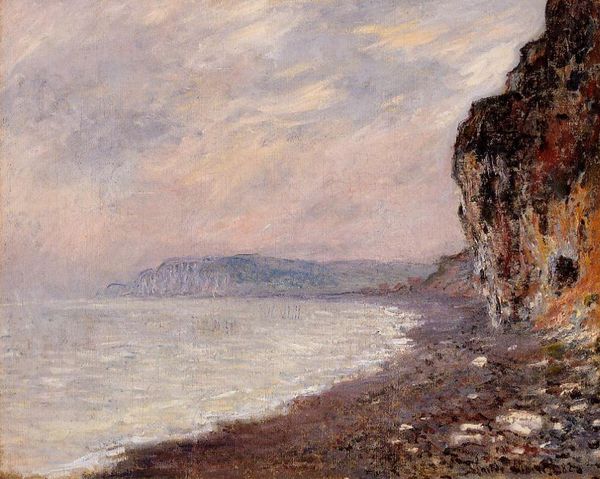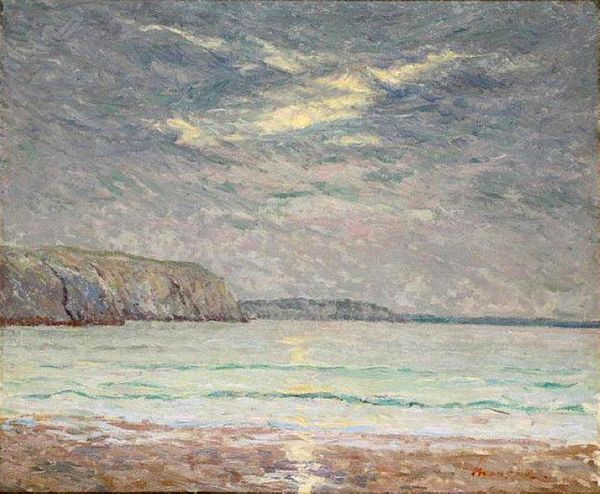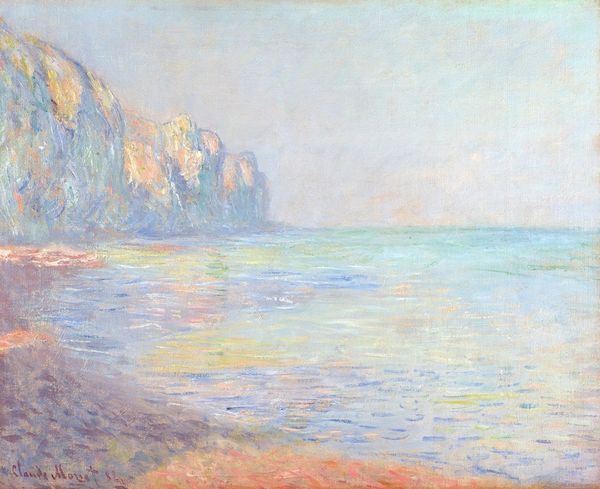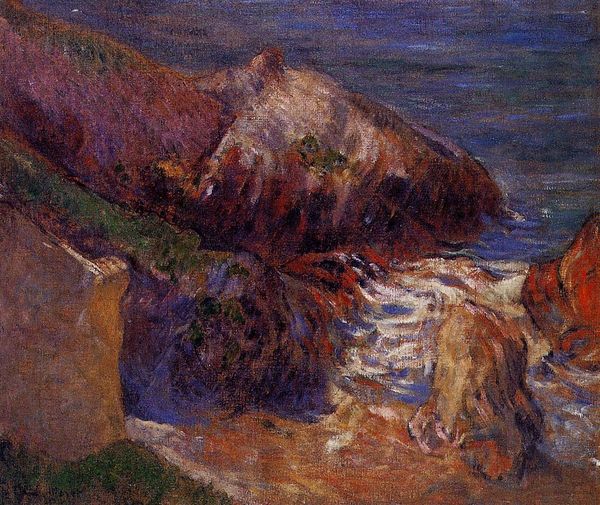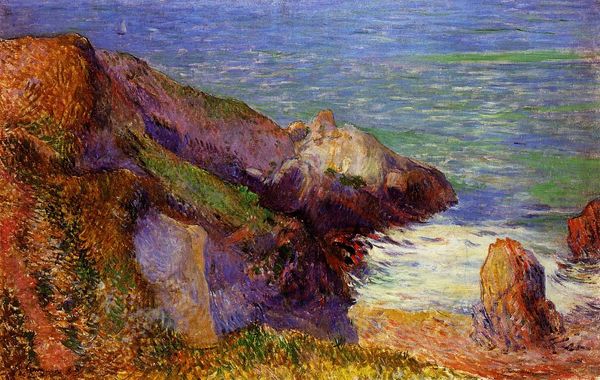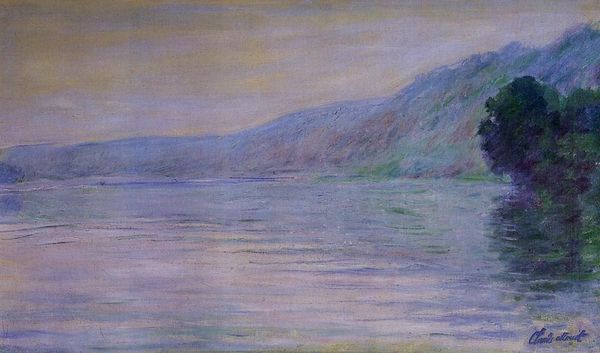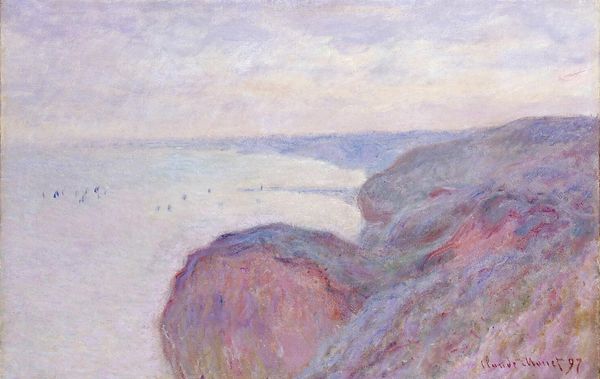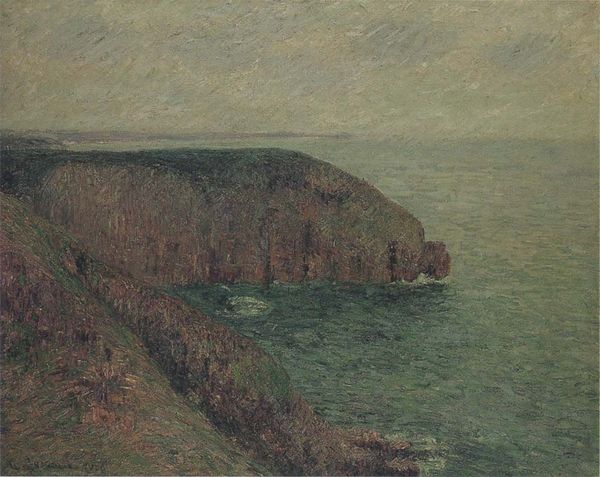
Copyright: Public domain
This painting of the Normandy coast was created by Claude Monet in 1897. The fleeting atmospheric effects he captured came to define Impressionism. But what social conditions made this artistic movement possible? After the 1870s, the French state actively promoted national identity through cultural policies, including supporting art that depicted French landscapes. Monet and other Impressionists seized on this, painting scenes of leisure and natural beauty that resonated with the burgeoning middle class. This class also had more opportunities to visit these places, and thus found it easier to identify with these scenes. Monet's choice to paint en plein air, or outdoors, was also a key element of this social shift. He focused on capturing the transient qualities of light and atmosphere, rather than adhering to academic standards of idealized beauty. To understand this painting better, we can look at how it was received by critics, and how it fit into broader trends in French art and culture at the time. Studying these factors allows us to interpret art as a product of its specific social and institutional context.
Comments
No comments
Be the first to comment and join the conversation on the ultimate creative platform.

